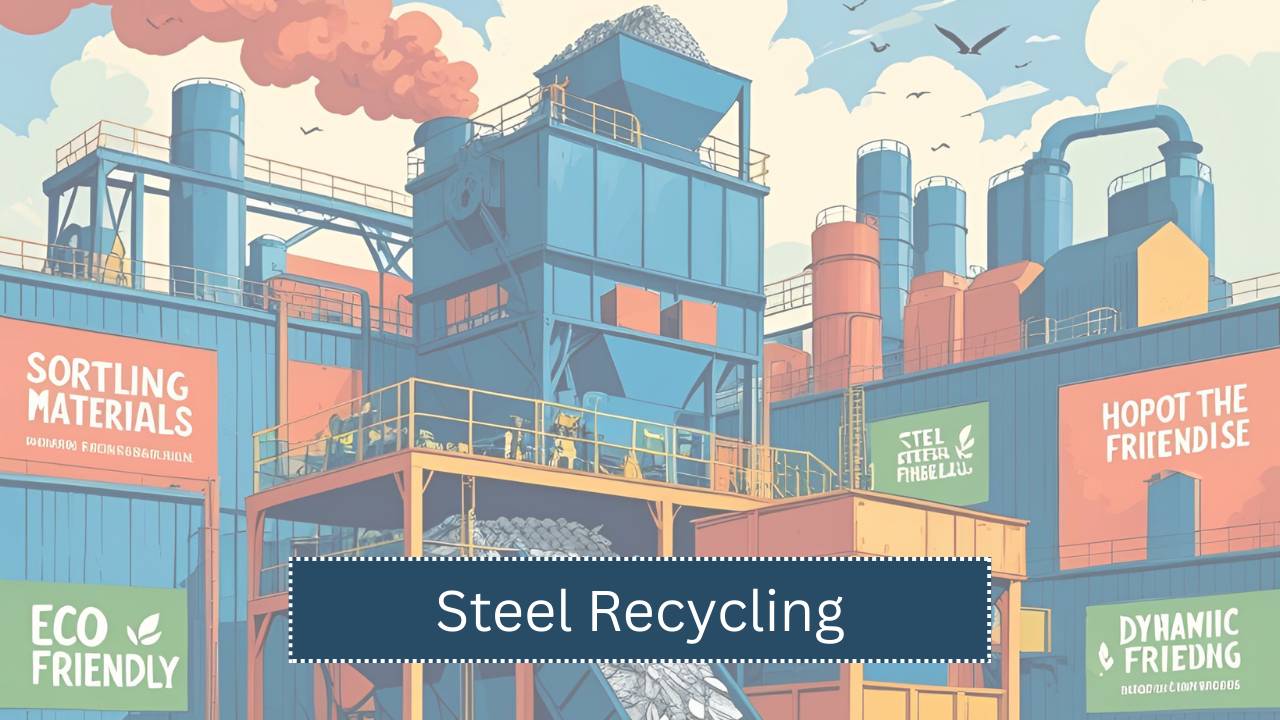Steel recycling plays a vital role in modern industries and environmental protection. With growing demand for sustainable practices, recycled steel has gained importance for being both cost-effective and eco-friendly. Recycled steel can be reused without losing its strength or quality, making it one of the most recyclable materials in the world. This article explores current trends in the steel recycling market and highlights the major environmental benefits associated with it.
Why Steel is Highly Recyclable
Steel is made primarily from iron ore and carbon, which can be melted and reused many times. Unlike many other materials, steel does not lose its strength or durability during recycling. This makes it a preferred material in construction, automotive, manufacturing, and packaging industries.
Key Features of Recycled Steel
| Feature | Description |
|---|---|
| High Durability | Maintains strength after multiple recycling cycles |
| 100% Recyclable | Can be recycled indefinitely without quality loss |
| Cost-effective | Reduces the need for raw materials and saves energy |
| Versatile Use | Used in construction, transport, machinery, and consumer goods |
Steel Recycling Market Trends
The steel recycling market is growing due to both environmental awareness and economic reasons. Governments, industries, and consumers are pushing for the use of sustainable materials. These trends are shaping the future of steel recycling across the globe.
1. Growing Demand from Developing Nations
Emerging economies like India, China, and Brazil are using more recycled steel in construction and manufacturing due to lower costs and sustainability goals. This is pushing up the demand for scrap steel in global markets.
2. Technological Advancements in Recycling
Modern recycling facilities now use automated sorting and advanced melting techniques. These technologies have improved the efficiency and quality of recycled steel.
3. Government Regulations and Policies
Environmental regulations in many countries require the use of recycled materials. Green building codes and zero-waste policies have increased the use of recycled steel in public and private projects.
4. Circular Economy Practices
Industries are adopting circular economy models where materials are reused, recycled, and repurposed. Steel recycling is at the center of these efforts.
Current Market Overview
| Region | Steel Recycling Trend |
|---|---|
| North America | High recycling rates, government support |
| Europe | Strong policies, circular economy initiatives |
| Asia-Pacific | Rapid industrial growth, rising scrap steel demand |
| Latin America | Moderate growth, growing construction sector |
| Middle East | Rising awareness, limited infrastructure |
Environmental Benefits of Steel Recycling
Steel recycling provides major environmental advantages. From saving energy to reducing waste and pollution, it contributes to a cleaner and greener world.
1. Energy Savings
Recycling steel saves a significant amount of energy compared to producing new steel from iron ore. On average, recycled steel uses 60-74% less energy.
2. Reduction in Greenhouse Gas Emissions
Producing new steel releases large amounts of CO₂. Recycling reduces emissions by up to 58%, helping to combat climate change.
3. Conservation of Natural Resources
Steel recycling reduces the need for mining iron ore, coal, and limestone. This helps conserve non-renewable resources and protects natural ecosystems.
4. Decreased Landfill Use
Scrap steel would otherwise end up in landfills. Recycling diverts millions of tons of waste from landfills every year.
Environmental Impact Comparison
| Process | CO₂ Emissions | Energy Use | Raw Materials Used |
|---|---|---|---|
| New Steel Production | High | High | Iron ore, coal, limestone |
| Recycled Steel | Low | Low | Scrap metal |
Industries Benefiting from Recycled Steel
Recycled steel is used across various industries, helping them reduce costs and meet sustainability targets.
| Industry | Use of Recycled Steel |
|---|---|
| Construction | Beams, columns, rebar, and structural frames |
| Automotive | Car bodies, frames, and engine parts |
| Packaging | Food cans, bottle caps, and other containers |
| Appliances | Washing machines, refrigerators, ovens |
| Shipbuilding | Hulls, decks, and reinforcement components |
Challenges in Steel Recycling
Despite its many benefits, steel recycling also faces challenges:
- Quality Control: Sorting and removing non-metal impurities is essential to maintain high quality.
- Infrastructure Needs: Many regions lack advanced recycling plants.
- Price Fluctuations: Scrap steel prices often change based on global supply and demand.
- Public Awareness: Many people are unaware of the importance of recycling steel.
Solutions and Opportunities
Efforts are being made globally to improve steel recycling processes and raise awareness:
- Public Education: Awareness programs encourage individuals and companies to recycle.
- Recycling Incentives: Governments offer financial incentives to boost recycling.
- Research & Development: New technologies are being created to improve recycling efficiency.
- Industry Partnerships: Collaboration among companies is helping build better recycling systems.
Future of Steel Recycling
The future of steel recycling looks promising. As industries adopt greener methods and governments enforce stricter environmental rules, steel recycling will play a more critical role. Demand for recycled steel is expected to rise significantly in the next decade.
Estimated Growth Forecast
| Year | Global Market Size (USD Billion) | Key Driver |
|---|---|---|
| 2023 | 50.1 | Increased green building projects |
| 2025 | 58.7 | Government regulations and investments |
| 2030 | 72.5 | Technological innovation & automation |
Looking Ahead
Steel recycling is not just a way to reduce waste—it is a crucial step toward a sustainable future. By saving energy, reducing pollution, and conserving resources, recycled steel supports both the environment and the economy. With the rising demand for eco-friendly materials, growing global awareness, and advancements in recycling technology, steel recycling will continue to expand. Industries and individuals alike must recognize its value and contribute actively to creating a cleaner, greener planet.

